Where Was the Birthplace of the American Vacation?
First in rustic tents and later in elaborate resorts, city dwellers took to the Adirondacks to explore the joys of the wilderness
/https://tf-cmsv2-smithsonianmag-media.s3.amazonaws.com/filer/Adirondacks-Great-Camp-Sagamore-631.jpg)
One of the little-known turning points in the history of American travel occurred in the spring of 1869, when a handsome young preacher from Boston named William H.H. Murray published one of the first guidebooks to a wilderness area. In describing the Adirondack Mountains—a 9,000-square-mile expanse of lakes, forests and rivers in upstate New York—Murray broached the then-outrageous idea that an excursion into raw nature could actually be pleasurable. Before that date, most Americans considered the country’s primeval landscapes only as obstacles to be conquered. But Murray’s self-help opus, Adventures in the Wilderness; or, Camp-Life in the Adirondacks, suggested that hiking, canoeing and fishing in unsullied nature were the ultimate health tonic for harried city dwellers whose constitutions were weakened by the demands of civilized life.
This radical notion had gained currency among Europeans since the Romantic age, but America was still building its leisured classes and the idea had not yet caught on with the general public. In 1869, after the horrors of the Civil War and amid the country’s rapid industrialization, Murray’s book became a surprise best seller. Readers were enthralled by his vision of a pure, Edenic world in the Adirondacks, where hundreds of forest-swathed lakes were gleaming “like gems...amid the folds of emerald-colored velvet.” Murray argued that American cities were disease-ridden and filled with pressures that created “an intense, unnatural and often fatal tension” in their unhappy denizens. The wilderness, by contrast, restored both the spirit and body. “No axe has sounded along its mountainsides, or echoed across its peaceful waters,” Murray enthused, so “the spruce, hemlock, balsam and pine...yield upon the air, and especially at night, all their curative qualities.” What’s more, Murray pointed out, a new train line that had opened the year before meant this magical world was only 36 hours’ travel from New York City or Boston. The vision struck a deep chord, and his book ran into ten editions within four months.
That first summer of ’69, the Adirondacks were inundated with would-be adventurers, each clutching a copy of Murray’s volume (including a tourist’s edition in waterproof yellow binding, with foldout train schedules and a map)—an influx that was dubbed “Murray’s Rush” by the press. It was a “human stampede,” wrote one modern historian with a florid turn of phrase that Murray would have appreciated—“like hungry trout on a mayfly-feeding frenzy.” Unfortunately, it was also one of the wettest and coldest summers in Adirondack history, ensuring that the region was not quite the Arcadian idyll Murray had depicted. Many of his followers arrived woefully unprepared, and as nervous in the wild as Woody Allen characters today. These Gilded Age city slickers got lost only a few yards from their camps, overturned their canoes and became terrified by deer or bear tracks. A late winter meant that black flies—a biting scourge in the Adirondacks every June—persisted well into August, and clouds of mosquitoes turned many campers into raw-skinned wretches. The few rustic inns in the area, which had previously only catered to a few gentlemen hunters, were overwhelmed. One hotel became so crowded that the rapacious owner charged by the hour for guests to sleep on the pool table. Locals with no experience hired themselves out as guides to the city rubes, adding to the chaos by leading their groups astray and camping in dismal swamps.
These pioneer nature lovers were soon derided in the press as “Murray’s Fools” (the book had come out around April Fool’s Day), and the author was denounced by angry readers for grossly exaggerating the charm of the outdoors. Meanwhile, gentlemen hunters complained that Murray was too democratic, flooding the forests with hoi polloi, including, shockingly, women. The young preacher had even taken his own wife on extended camping trips. “Let the ladies keep out of the woods,” fumed one critic.
Murray was forced to publicly defend himself in the New York Tribune. In a long “Reply to His Calumniators,” he pointed out that he could hardly be held responsible for the dreary weather, including rains that were “ten fold thicker than was ever known.” Many first-time campers had failed to heed his tips, he noted, arriving in the wilderness “dressed as for a promenade along Broadway, or a day’s picnic.” And he predicted that the Adirondacks would become America’s “great Summer resort”: “Hotels will multiply, cottages will be built along the shores of its lakes, white tents will gleam amid the pines which cover its islands, and hundreds of weary and overworked men will penetrate the Wildness to its innermost recesses, and find amid its solitude health and repose.”
Of course, Murray was right, and the outrage over that first summer did not dent the growing popularity of the Adirondacks. When the season of 1870 arrived balmy and clear, the region surged ahead as the country’s democratic playground, with Murray as its chief promoter. Now a wealthy celebrity author, he mixed his religious duties with lecture tours around the Northeast, making more than 500 appearances to an estimated half a million Americans in the next three years. His soaring oratory, rugged good looks and powerful physique made him a huge success, as did his rags-to-riches life story. Raised as a poor farm boy in Guilford, Connecticut, he had started at Yale College wearing handmade clothes and with $4.68 in his pocket. He spent his first summers in the Adirondacks at the suggestion of a friend, and began writing stories about it for a local newspaper. His passion for the outdoors often raised eyebrows among New England congregations: On one occasion, he arrived to give a sermon while still wearing his shooting jacket and hunting breeches, and leaned his rifle against the pulpit.
“Murray was the right person, in the right place, with the right words, at the right time,” says Steven Engelhart, executive director of Adirondack Architectural Heritage in Keeseville, New York. Although enlightened American writers like Henry David Thoreau and Ralph Waldo Emerson had argued for the spiritual value of nature as far back as the 1840s and ’50s—Emerson even slept out with erudite friends in the Adirondacks, in the so-called Philosophers’ Camp on Follensby Pond—their work reached only a relatively small, elite group of readers. But Murray’s book, with its direct, straightforward “how-to” tips, mixed with a series of humorous short stories about wilderness camping, truly seized the public’s imagination.
The Adirondacks were soon booming. By 1875, some 200 hotels and camps were operating in the mountains, with new stagecoach services rattling from the train stations and steamboats plying the lakes. By 1900, the Adirondacks’ summer population had risen to around 25,000 from 3,000 in 1869. Attracted by the fishing and hunting but appalled by the crowds, the Vanderbilts, Rockefellers, Carnegies, Huntingtons and other fabulously wealthy industrialists built their own spectacular “great camps,” where they could disport with their families in private luxury. The American vacation was born—quite literally. The scions of New York City took to declaring that they would “vacate” their city homes for their lakeside summer retreats, and the term “vacation” replaced the British “holiday” in common parlance. As fellow Bostonian Wendell Phillips put it, Murray’s book had “kindled a thousand campfires and taught a thousand pens how to write of nature.”
***
Today, New Yorkers have no doubt about the pleasures of escaping the city in summer. Last season, as the canyons of Manhattan began to radiate heat like a pizza oven, I found an original 1869 edition of Murray’s guidebook in the archives of the New York Public Library. Its brown leather binding was beaten and cracked, as if it had itself been on a few canoe trips around the St. Regis lakes, but the pages were still intact, and were illustrated with engravings of out- door life. The abundance of practical advice (“The Wilderness: Why I Go There,—How I Get There,—What I Do There,—And What It Costs”) offered a wealth of detail on Gilded Age travel. Murray advised his readers how much to pay a guide ($2.50 a day), how to budget for food ($2 a week) and what to pack. (“One pair pliable buckskin gloves, with chamois-skin gauntlets tied or buttoned at the elbow,” and, as an insect repellent, “a bottle of sweet oil and a vial of tar.”)
Sadly, his favorite guesthouses have vanished, including Mother Johnson’s inn, where “you find such pancakes as are rarely met with.” But the general message of the guidebook could not be more valid today. Within a day’s drive for 60 million people lie vast swaths of wilderness, including some 3,000 lakes, that are now protected as part of the Adirondack Park—a sprawling 6.1 million acre reserve that is larger than Yellowstone, Yosemite and Glacier national parks combined. The park was created in 1892, as conservationists became concerned at the effects of logging and other industry in the area. The state legislature set aside an initial 680,000 acres to be “forever kept wild” and began purchasing private land as it became available. Today, the Adirondack Park contains a complex mixture of state and private property, with nine different categories of protection. But despite its scale, the park has lost its iconic status. When it comes to wilderness, most of us think first of the Western parks.
With a photocopy of Murray’s book in my pack, I decided to leave the big city and see how much of the Victorian solitude could be found via Highway 81. Even in 1869, Murray recommended that travelers venture into the genuinely pristine corners—a principle that is rarely observed today. Of the over seven million visitors who enter the park every year, only a small fraction stray from their cars. “This area is still pretty rugged compared to the rest of the Northeast,” says Hallie Bond, former curator at the Adirondack Museum in Blue Mountain Lake. “Instead of agricultural farmland, you’re suddenly in dark and forbidding woods, which can be quite daunting. We get some people who arrive in Lake Placid or Lake George”—two crowded tourist centers, their streets lined with clothing chains and fast-food stores—“and think they’ve seen the Adirondacks.”
So I quickly turned off the main roads into Murray’s favorite part of the region, which boasted scenery, he wrote, “to rival Switzerland.”
***
As dawn broke the next morning, I was in a kayak on the mirror-still waters of Sagamore Lake and already spotting loons. The sudden emptiness was startling: Not a single structure could be seen in the forest, except for the distant form of Great Camp Sagamore, whose wooden facade blended soothingly into the surrounding trees. Dipping my paddle through the rising condensation felt like rowing through the clouds.
For travelers today, the most direct link to the genteel past is by staying in one of the surviving “great camps.” These vernacular follies began to sprout across the remotest lakefronts in the 1880s, designed along a uniquely American style pioneered by William West Durant, whose intention it was to literally bring the outdoors inside. They were built from tree trunks with the bark left intact, and their interiors were decorated with local stones, furniture crafted from branches, animal skins and hunting trophies. After the Great Depression, many of the camps fell into disrepair when their owners’ fortunes dwindled. Some burned, others were leveled or imploded with neglect. Today, only about 35 survive, and most are in private hands. But in a democratic process that Murray would have applauded, several of the finest have become available to the public.
Built in 1897, Sagamore was originally one of the many Vanderbilt family estates. Guests arrived by horse-drawn carriage and were welcomed by bonfires and fireworks before adjourning to the rustic chic of their cabins. Descendant Alfred Vanderbilt III fondly likened Sagamore to the fantasy village Brigadoon that magically appeared from the mists. (“As the horses came to rest, the weary travelers knew they had reached heaven.”) The decades of social merriment lured guests from Hollywood, including Gary Cooper, Howard Hughes and Gene Tierney, often to enjoy the luxurious gambling room. The Vanderbilts left in 1954, and the camp was in danger of collapse when it was taken over in 1983 by the not-for-profit Sagamore Institute. Today, its 27 surviving structures have been stabilized and guests can still enjoy the porch of the Wigwam Building, for example, with its railing of bark-covered logs, or the open-air bowling alley made entirely from polished timber.
Farther north, by Lake Osgood, White Pine Camp was rescued in the 1990s by a group of history-loving investors. Built in 1907 for the New York banker Archibald S. White, it became “the summer White House” when President Calvin Coolidge moved in for three months in 1926, spending most of his days fishing, often in the company of Herbert Hoover. Today, the olive green cabins have been refitted with period furnishings, and a slender 300-foot wooden promenade still stretches across the lake to an islet crowned by a Japanese teahouse, an iconic image of the Adirondacks today.
But perhaps the most symbolic restoration story is Great Camp Santanoni, built in 1892 for a prominent Albany banker, Robert Pruyn, and his wife, Anna, whose devotion to nature verged on the mystical. It’s the only camp free and open to the public year-round—that is, if you can get there. Cars are forbidden on the grounds, so after I parked at the imposing riverside gatehouse in the town of Newcomb, I set off on a mountain bike along five miles of rough dirt road, passing the remains of the Pruyns’ private farm. At last, an enormous log structure loomed from the pine forest, in the final stages of renovation. A lone volunteer caretaker took me through vast empty chambers constructed from enormous logs, as Lake Newcomb shimmered below in the afternoon sun.
When Great Camp Santanoni became part of the state park in 1973, historic structures were simply allowed to decay, or were even deliberately destroyed, to keep the land “forever wild.” “They were seen as interfering with the purity of the wilderness,” Engelhart explains. In 1979, Great Camp Nehasane, a magnificent edifice by Lila Lake, was obtained by the state and burned by park rangers, at the request of the owners. The loss of such a nostalgic treasure helped galvanize preservationists, and Adirondack Architectural Heritage was formed in 1990 in part to save Santanoni. Visitors began to trickle to the site after it was acquired by the state. “People had no idea,” Engelhart recalls. “They would say, ‘Oh my God, look what’s here!’” In 1983, a new state law was created to help preserve historic sites and granted permission for building repairs. “It was real pitiful at first,” recalls local craftsman Michael Frenette, who has worked on Santanoni every summer since 1997. “There was nothing but porcupine scat and rotten lumber.” The boathouse had collapsed and was restored from about 30 percent of the surviving structure. Today, visitors can camp, hike and take free rowboats and canoes out onto the lake.
As I explored, I met another staff member, grad student Nina Caruso. “Robert Pruyn once wrote that, ‘There is independence, delight and peace in the isolation,’” she said. “Santanoni still has that. You get a bit of your soul back when you come up here.”
It was hard to imagine that anyone had ever thought of letting the elegant edifice vanish. “It’s easy to judge, but the 1960s and ’70s were the low point of public awareness of the great camps,” says Engelhart. “They really saw them as white elephants. But the public’s attitude has evolved over time. Today, we see the camps as valuable, because they reflect a design ethic we have come to embrace.”
***
In Murray’s day, the remotest corners of the Adirondacks could be reached only by canoe, often along hauntingly beautiful streams and rivulets. It’s still the same today. About one million acres, a sixth of the park’s area, is designated wilderness, its highest level of protection, ensuring that no motorized boats or wheeled vehicles are permitted, not even bikes. The High Peaks region around Mount Marcy offers the most dramatic topography, and I hiked in to overnight at Johns Brook Lodge, a base for long-distance treks that has been operated by the Adirondack Mountain Club since the 1920s.
But Murray was not a fan of foot travel. With few trails in the 1800s, pro- gress over fallen trees was painfully slow. “Key to Murray’s Adirondacks was the idea of hiring a guide and traveling by river,” says Bond. Murray waxes lyrical about guides with nicknames like “Snake-Eye” and “Old Mountain,” who were raised in tune with nature. His ideal was one John Plumbley, “the prince of guides”—“a man who knows the wilderness as a farmer knows his fields, whose instinct is never at fault, whose temper is never ruffled, whose paddle is silent as falling snow.” The Gilded Age guides even designed their own type of canoe, the Adirondack guideboat, with a shallow draft suited to navigate the smallest creeks, and lightweight enough to be carried across land.
For a trip that Murray would have approved of, I headed to the remotest stretch of the park, along the Oswegatchie River near the Canadian border. There, I signed up with Rick Kovacs, the last guide based in the town of Wanakena. “A century ago, there were 15 guides working this river, each one with his own fishing camp,” Kovacs told me as we paddled along the ever-narrowing Oswegatchie, whose waters were a rich brown from the tannin of decaying leaves and branches. “Now we’re barely holding on.” Like many of the 137,000 year-round residents in the Adirondack Park, he and his family company, Packbasket Adventure Lodge and Guide Service, struggle to make ends meet when the summer season ends.
The river snaked back and forth upon itself in tighter coils, as we paddled beneath enormous half-fallen trees from recent storms. “Easy bends, slow bends, sharp bends, rapid bends, and just bends everywhere,” wrote a traveler of his 1907 trip here. Robins swung low overhead, and raccoon tracks could be seen on the banks. At one point, we pulled the canoe over a beaver dam. By late afternoon, we set up camp at the Spring Hole Lean-to. When I dove into the river to cool off, it was like swimming in iced tea.
Not a soul passed us by, and it was easy to assume that little had changed since the 19th century. But nothing in the Adirondacks quite meets the eye.
“It looks like pure wilderness,” said Kovacs. “But even back in Murray’s day, a lot of the forest was being logged, clear-cut and burned. In the early 1900s, a logging railroad even went right by this river. The biggest trees would have been 300 to 400 years old, and grown as high as 150 feet. Even though the logging stopped a century ago, it will take a couple of hundred years more to get back to its original state”—assuming that recent weather extremes, which are affecting the forest, do not take their toll, he adds.
To some, that history of recovery is itself a kind of triumph. “Yes, the vast majority of the Adirondacks was cut over,” says Engelhart. “But the fact that we can treat it as wilderness is itself a human creation. We’re not leaving a wild area alone—we’re recreating a wild area by leaving it alone. To me, that’s equally, if not more, beautiful as an idea than if it had always been wild. It shows how we’ve changed as a people. We agree that wilderness is not something to be exploited, but something to be valued.”
***
There are no physical memorials to Murray in the Adirondacks, so as a final pilgrimage, I sought out his favorite spot. Today, a vintage-style ferry, the W.W. Durant, plies the sparkling waters of Raquette Lake, past strings of forested islands, including one named Osprey, which has a small jetty and a residence shrouded by trees. At the height of his celebrity in the early 1870s, Murray returned to this islet for weeks every summer to pitch his tent and entertain a multitude of friends and admirers. One enthusiastic guest, sportswriter Charles Hallock, was particularly taken by the author’s “comely wife,” who could be seen around the campsite wearing a hunting cap and a “mountain suit of red and crimson plaid. How jaunty she looked!” Another described the islet as “a scene from fairy land,” with Murray “perfectly aglow with enthusiasm over the wilderness and its attendant sports.” He was also enchanted by Murray’s wife, whom he described as ‘The Lady of the Lake.’”
William H.H. Murray’s subsequent descent into obscurity was as sudden as his rise to celebrity. Tensions with his conservative Boston church led to his resignation in 1874. (He thought more should be done for the city’s poor.) Five years later, after investing too deeply in horse breeding and spreading his assets thinly, his finances and his marriage both collapsed, and Murray left New England for the anonymity of rural Texas. He failed in several business ventures, started an oyster restaurant in Montreal, and made a cameo appearance in Buffalo Bill’s Wild West Show. In 1886, he revived his skills as an orator, narrating for New England audiences a heartwarming series of short stories about the Adirondacks that featured a heroic trapper named John Norton. (They are little read today, since he “mired himself in a kind of nostalgia and sentimentality,” one critic notes.) He made enough to repurchase his family home in Guilford, Connecticut, where he died in 1904 at age 64.
Murray’s writings were slowly forgotten except among specialist historians. For a few years, his beloved Osprey Island was commonly referred to as Murray’s Island, but it eventually returned to its original name. Privately owned, it remains off-limits to the public today. His best memorial is, of course, the Adirondack Park—which, with its complex system of ownership and regulation, is rather like Murray the man, eccentric and imperfect. Despite his midlife wanderings, Murray remained a tireless advocate for the park, insisting on the value of public access. In 1902, two years before he died, he wrote in the outdoor magazine Field and Stream that even New York State was only holding the wild lands of the Adirondack in trust for future generations. “God made them and made them to stand for what money cannot buy,” he declared.
Planning Your Next Trip?
Explore great travel deals
Smithsonian magazine participates in affiliate link advertising programs. If you purchase an item through these links, we receive a commission.
/https://tf-cmsv2-smithsonianmag-media.s3.amazonaws.com/accounts/headshot/tony.png)
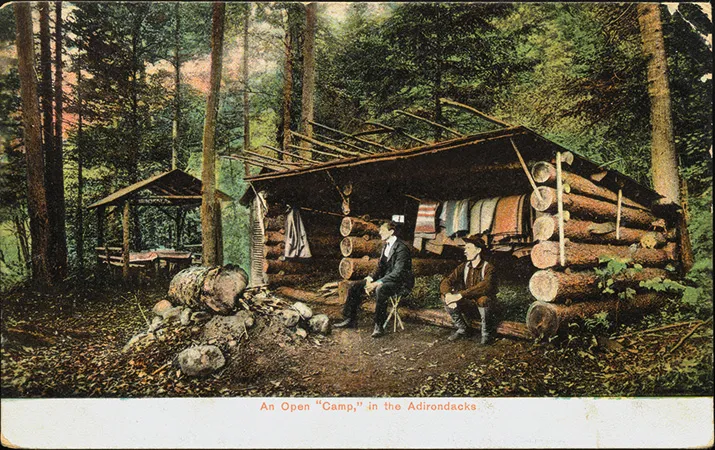
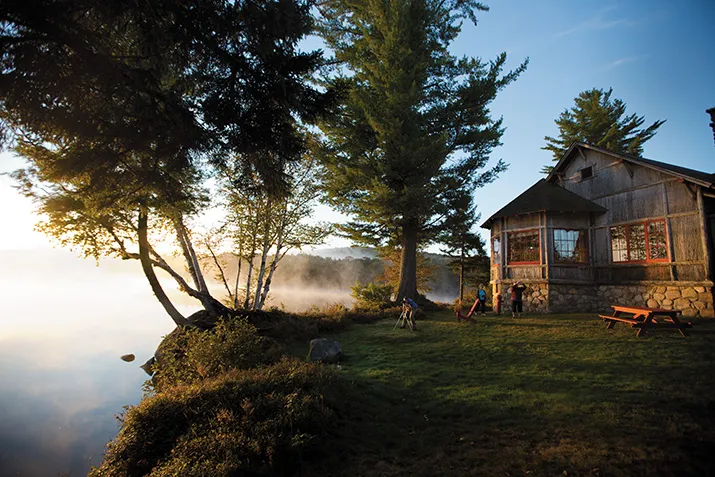

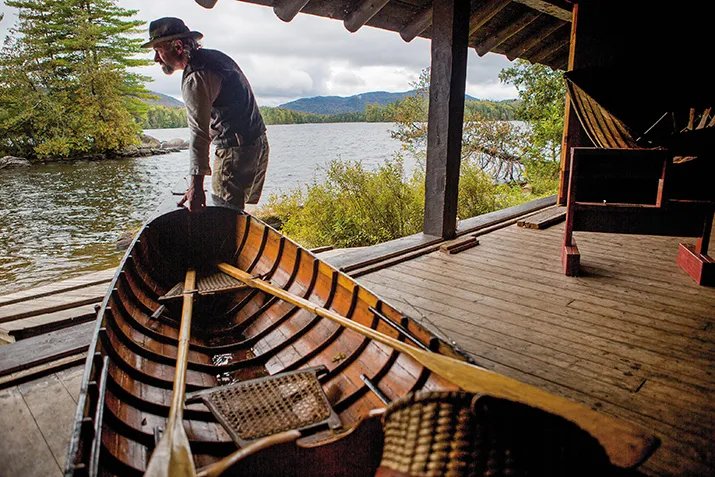
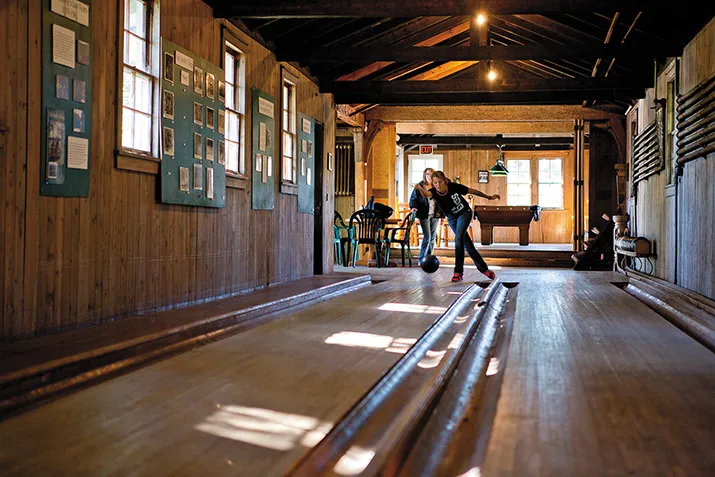
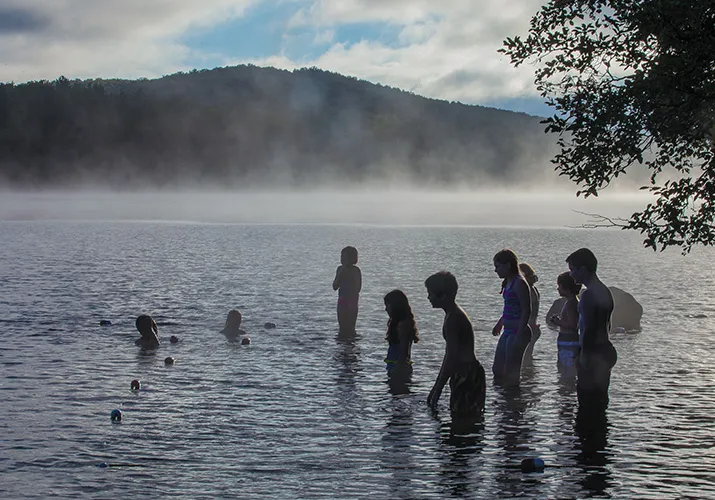
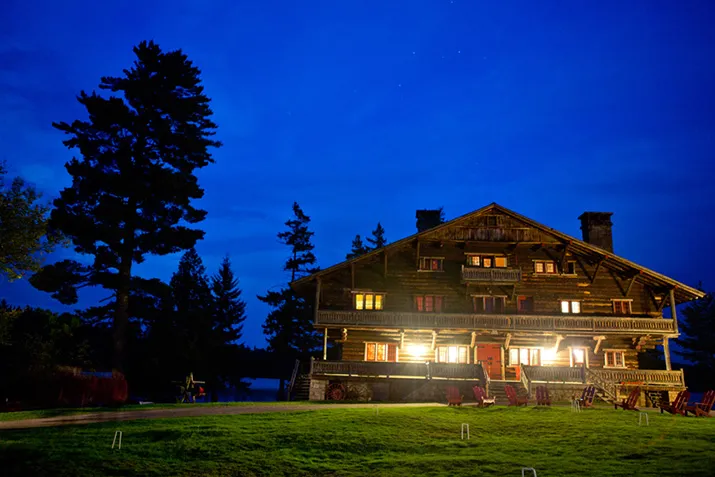
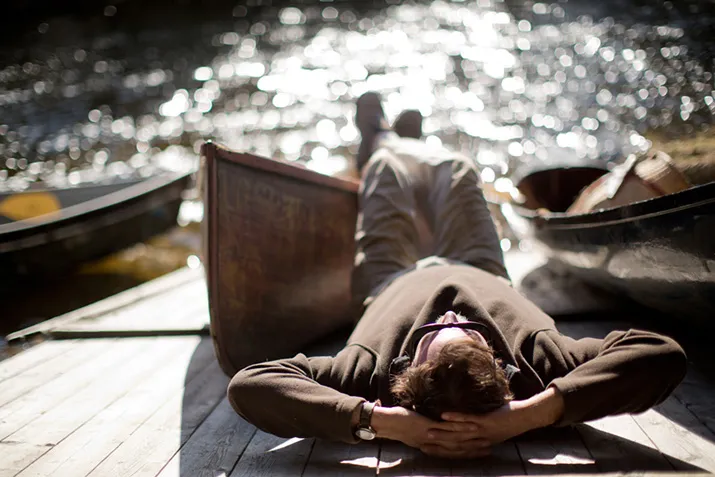
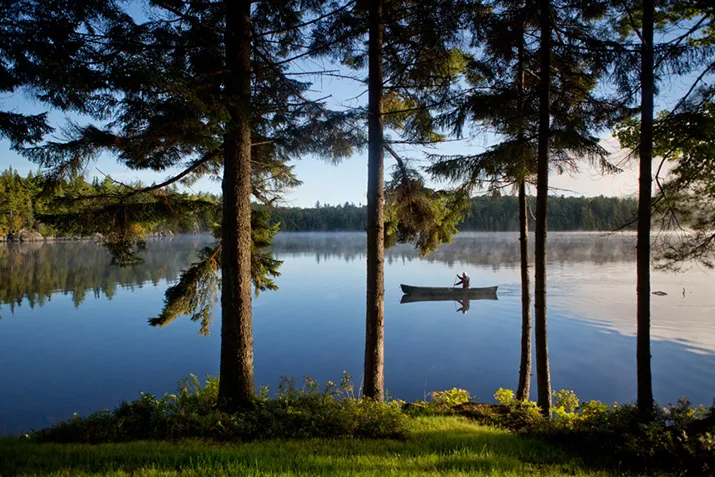
/https://tf-cmsv2-smithsonianmag-media.s3.amazonaws.com/accounts/headshot/tony.png)